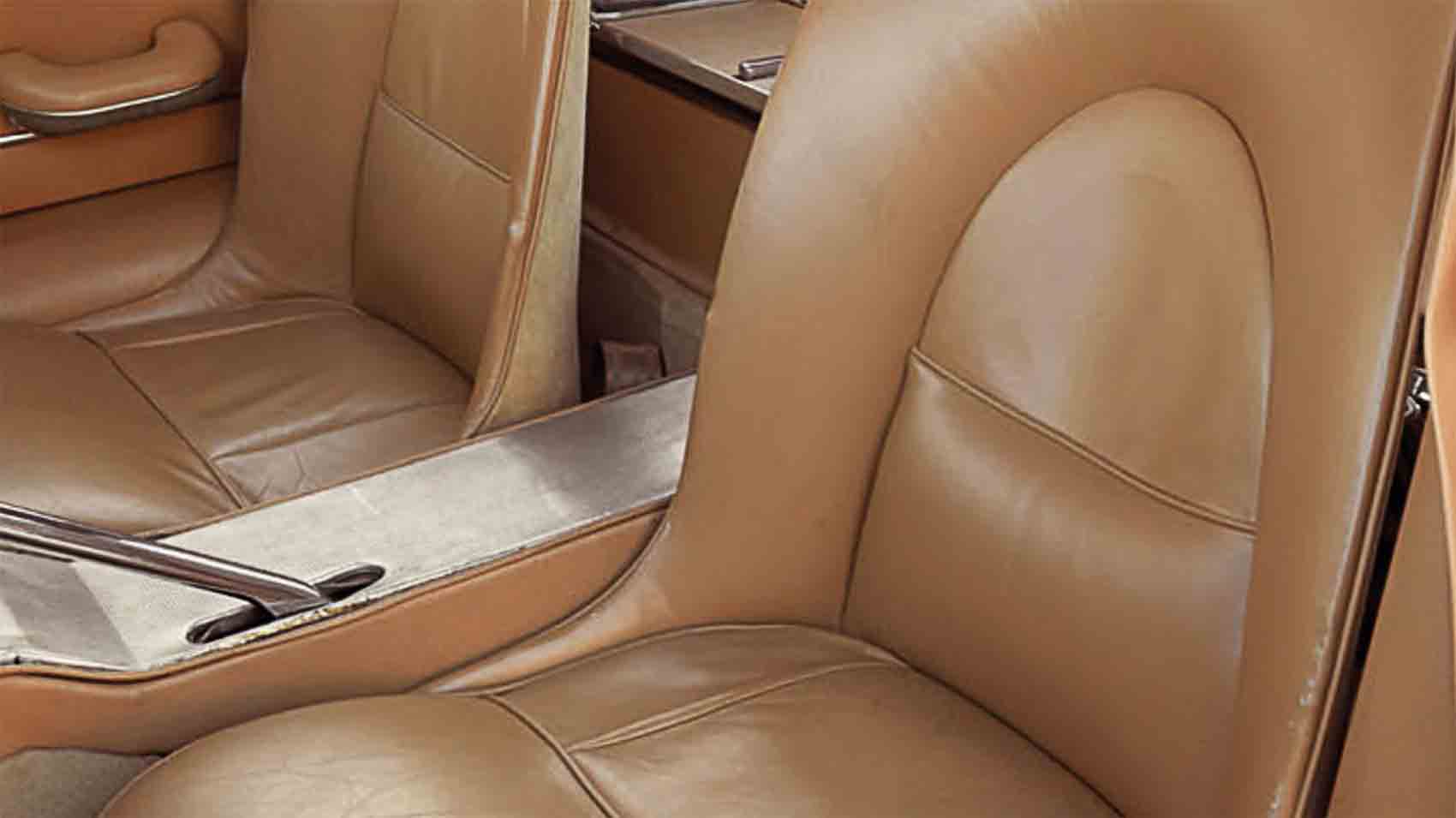
Jaguar E-type
With the ground-breaking Mini at the forefront of the 1960s swing, lovers of high-performance cars favored the Jaguar E-type. Instantly recognizable and enormously desirable, it was never quite as fast as the public imagined. However, with aerodynamic lines clearly derived from the Le Mans-conquering D-type, it was nevertheless frequently voted the most beautiful car ever designed, and with some justification.

SEEKING TO BUILD on the success of such cars as the XK120, C-and D-type, Jaguar founder, Sir William Lyons, charged his racing department with the creation of the first E1A prototype in the late 1950s. Intended purely for technical evaluation (and scrapped before the public had seen it) it was to be 1961 before a version went on sale.
The E-type’s windcheating shape, 3.8 liter straight-six, and exceptional value-for-money meant success came quickly. The availability of both coupe and roadster versions served only to magnify sales. Larger engines included a smooth V12, although these later models abandoned the purity of the original design.

SPECIFICATIONS
| Model | Jaguar E-type Series 1, 1961-64 |
| Assembly | Coventry, UK |
| Production | 15,490 |
| Construction | Steel monocoque |
| Engine | 3,781 cc, straight-six |
| Power output | 265 bhp |
| Transmission | 4-speed manual |
| Suspension | Front torsion bar, rear coil springs |
| Brakes | All-round discs |
| Maximum speed | 143 mph (230 km/h) |

Styling
Early versions of the E-type, when adornments were kept to a minimum, displayed the cleanest and sleekest shape of any car in production. Enzo Ferrari, on seeing his first, is said to have called it “the most beautiful car ever made.”

Jaguar badge
Every bit as recognizable as the E-type itself, Jaguar’s badge was both stylish and attractive. The additional big cat logo was clearly intended to convey the speed and lithe muscularity of its cars, which for years were sold under the banner “Grace, Pace, and Space.”
ON THE ROAD
It’s easy to see why the Jaguar E-type attracted so much attention. With its long, sleek bonnet and short rear, compact dimensions, and aerodynamic, windcheating shape (not to mention the pleasing rumble of its classic XK straight-six engine) it’s hard to believe that when it first went on sale it was just about the cheapest car in its class.
In truth it still is. E-type prices have rocketed in recent years, particularly for the earlier cars, but as classics go it is still possible to enjoy smooth E-type motoring for a fraction of what you might pay for a Ferrari of a similar vintage.
Enthusiasts still argue about which design is the best looking roadster or coupe, two-seater or the later 2+2—but one thing is sure, few cars before or since have ever looked this good.

Iconic snarling big-cat badge

Cowled headlamps on early cars for improved aerodynamics

Beautifully slim rear lamp cluster

Unusual triple wipers

Chrome spinners on wire wheels

Refined chrome and leather interior

Slim leather bucket seats

Simple, clear switch gear

Elegantly crafted handbrake lever

Classic ‘XK’ straight-six engine
It is a quote. The Classic Car Book – The Definitive Visual History 2016




